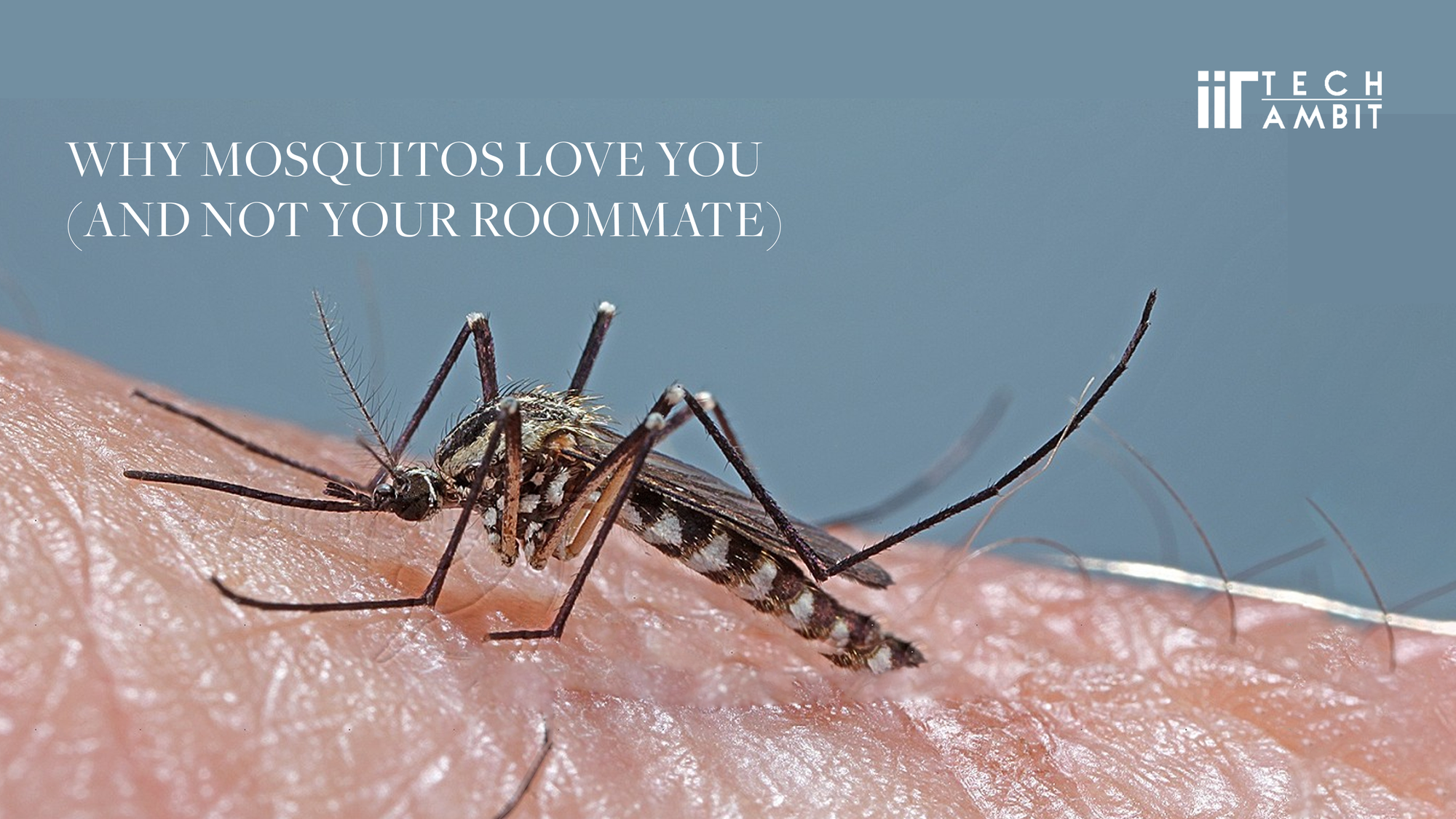Have you ever tried sleeping early, only to be woken up by an army of mosquitoes out for your blood, all while your roommate sleeps peacefully right next to you, with no signs of an insect assault? Is the Mosquito corporation out to get you, or is there something else?
It is no secret that mosquitoes are attracted to certain scents and repelled by others, as shown by multiple studies done on this subject. However, they are scattered and use a variety of parameters, which makes it hard to reach general conclusions. This also makes it difficult to predict responses to new odours. So, to solve this problem, Prof. Nitin Gupta and his team at IIT Kanpur have compiled the available behavioural and electrophysiological olfactory responses in 12 species of mosquitoes from over 170 research papers and have created a database called MORE (Mosquito Olfactory Response Ensemble). Now, what is so special about this database? And how was it created? Also, how will it help you take revenge on your roommate?
So How Does One Create A Database on Mosquito Corp?
Well, one problem that the researchers faced was that different studies measured behavioural responses using different metrics. Some of the metrics used were preference index, per cent attraction, per cent repellency, etc. All of these were instead converted to one common metric - the Preference Index (calculated as the (the number of animals choosing the test odour) minus (the number of animals choosing the control) divided by the sum of the two numbers). Not only this, a lot of studies reported data in the form of plots. This data also had to be extracted manually. Moreover, entries that were reported under different synonyms were mapped to a standard name and the odorant concentrations were converted to standard units.
Alright, so a lot of work was put into making this structured database, but the question remains - how will it be useful? And am I really on the hit list of a secret organisation of mosquitoes?
It's Not You, It's Your Roommate.
One interesting pattern that the researchers noticed was that higher concentrations of Benzaldehyde were typically associated with more aversion. This can be seen in graph A1. This naturally led to the question - can this behaviour be generalised? Do other odours also show similar patterns?
So, to study the effect of odour concentration on preference index, researchers at IIT Kanpur collected pairs of preference indices at concentrations separated by a factor of 10 for the same odour, using the same type of assay (the process of analysing a substance to determine composition or quality) in the same species and compared the preference indices at higher and lower concentrations. The results of this experiment support what I had always suspected - my roommate is probably just more… odorous. It turns out that increasing the odour concentration 10-folds decreases the preference index (on average) by 0.2. What’s more, this trend is observed in both positive (attractive) and negative (aversive) odours.
Why? One would ask. Well, one possible explanation for this is that higher concentrations are likely to activate non-specific olfactory responses, irrespective of whether they are positive or negative odours. This indicates a very disturbing result - the ones who are the safest from mosquitoes are either those who haven’t showered in ages or those who leave a traumatising trail of deodorant behind them.
The Perfect Smell
If the behavioural response varies depending on the odour, then there must be a smell that mosquitoes prefer, which can be used to…let us say ‘redirect’ them. In that case, how do we find it?
This is where MORE comes in handy! The data from MORE can be visualised in the form of graphs, such as these graphs which check the response of sensory neurons against some common parameters of odorant molecules.
The nice bell curves indicate that mosquitoes preferably detect molecules whose physicochemical properties are within certain ranges. 12 of the 13 properties on which data is available show such curves, the only exception being the number of conformers of the molecule. This indicates that there are in fact ‘ideal molecules’ (read smell) that the mosquitoes can detect. All one needs to do now is find such a molecule in the closest pharmacy.
But leaving aside my personal motivations, this regularity in the data tells us that it is probably possible to complete the missing points on the graph. And this is where it gets even more interesting. A neural network was built and trained with a 70-15-15 split of the dataset for training, validation and testing. The model showed very promising results, with a high correlation to the testing data, suggesting that machine learning will be a useful tool when predicting the responses to novel odorants.
Here's to a Mosquito-Free Sleep!
So, not only does MORE help compare various studies on mosquitoes, but it can also be used to study the effect of various changing parameters on olfactory responses, as well as predicting responses to new odours. And then there’s also the fact that it may help remove your name from Mosquito Corp’s books.
P.S.: If you are the roommate who usually isn’t the target of mosquitos, the authors are not responsible for ruining your sleep.

